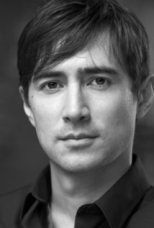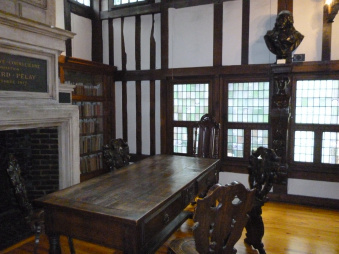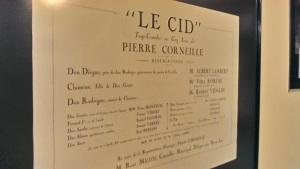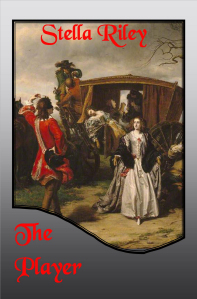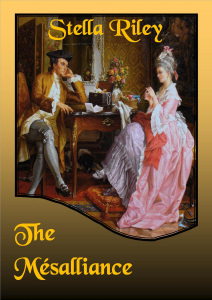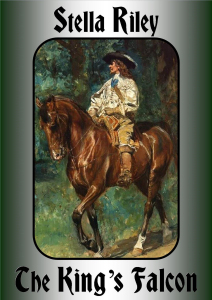Stella Riley's Blog, page 7
January 13, 2016
REVIEW – THE PARFIT KNIGHT BY STELLA RILEY
December 18, 2015
COMING SOON IN AUDIO …
Yes, the Rockliffe series will soon be available as audio books and I’m absolutely delighted to announce that they will be narrated by Alex Wyndham – with whose work I know many listeners are already familiar.
The Parfit Knight is currently in production and, although I don’t have a fixed release date at this stage, it is likely to be some time in January. I am hoping that The Mésalliance and The Player will follow fairly swiftly – but naturally this is dependent upon other factors.
If you’ve listened to Alex’s outstanding narrations of some of Lucinda Brant’s books and would like to know a bit about the man behind The Voice …
An Oxford University and Royal Academy of Dramatic Art graduate, Alex Wyndham has voiced everything from Apple TV campaigns to fertilizer instructions. He’s starred in numerous BBC 4 radio plays, and narrated documentaries for Channel 4 and The Discovery Channel. He started recording audio books a couple of years ago – and fell in love with it.
Alex also has a successful screen career and has starred in several BBC and HBO shows including the Emmy winning Little Dorrit and Rome, and in various films including Kenneth Branagh’s As You Like It. Most recently he played a louche surgeon in The Crimson Field mini-series and has just had his first stab at starring in a video game –We Happy Few – about a dystopian 60s England.
In the not-too-distant future, look out for an audio interview with Alex and me at AudioGals.
Meanwhile – Merry Christmas & a Happy New Year to one and all!


December 11, 2015
I’M SO EXCITED!
Audio books are coming!
Yes – one of my titles is currently being produced as an audio by a highly-skilled narrator and I’m absolutely thrilled.
If anyone would like to guess which book will be leading the charge, please feel free. Alternatively, let me know which one you’d most like to listen to.
Watch this space. Further information will be coming soon.


December 8, 2015
CORNEILLE and the Théâtre du Marais
Pierre Corneille
1606-1684
On a bright but chilly December morning in Rouen, the Corneille Museum was a warm and welcome surprise … and my husband and I had it to ourselves.
The museum is situated in the house that was Corneille’s home for over fifty years. A pleasant, welcoming building with two large, light rooms on each floor which, in additional to relevant theatrical memorabilia, also contain Corneille’s extensive library and his desk.
I should probably admit that I’m not actually a great fan of Corneille’s plays and much prefer those of Moliere.
But I wanted to use French theatre as a background to The King’s Falcon which is largely set in 1652 – and at that time, Moliere’s troupe was still touring the provinces. Corneille, on the other hand – though his popularity had taken a bit of a hit in the late 1640s – was still the foremost French dramatist of his day.
He wrote some forty-two plays during his lifetime, many of which have been largely forgotten and only four are ever performed in any language other than French.
Horace (1640), Cinna (1641), Polyeucte (1642/3) … and the one for which Corneille is best known and which began his rise to theatrical stardom … Le Cid.
Le Cid was premiered at the Théâtre du Marais in 1637. This had been founded only three years before by two actors (Lenoir and Montdory) who felt it was time to end the theatrical stranglehold of the King’s Players at the Hotel de Bourgogne … and it immediately gained the patronage of Cardinal Richelieu. The theatre, which had begun life as a tennis-court, suffered a damaging fire in 1643 which resulted in some re-building – and the installation of the first proscenium stage.
Richelieu had been Corneille’s patron as well as that of the Marais Theatre until the opening performance of Le Cid. The play was an instant success but it was also controversial in that it departed from the existing form and style. Richelieu didn’t like it; Corneille refused to accept the Cardinal’s criticisms and thus a parting of the ways became inevitable. Richelieu, being a fan of Montdory, continued to support the Marais until his own death in 1642 … but Corneille now took his new plays to the Hotel de Bourgogne.
And then, in 1652, something occasioned a change of heart. Perhaps because his recent offerings had been less than successful or perhaps because of some disagreement at the Bourgogne, Corneille gave permission for a revival of Le Cid on the stage of the Marais Theatre where it had premiered some fifteen years before. Readers of The King’s Falcon will recall that Athenais de Galzain took the leading role of Chimene … her first opportunity to play Corneille and an occasion of equal delight and terror.
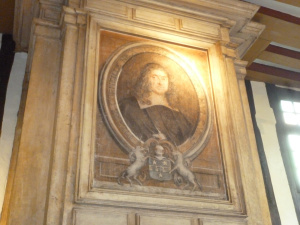 This portrait is fitted above the fireplace in Corneille’s study. The sun strikes it from windows to the right.
This portrait is fitted above the fireplace in Corneille’s study. The sun strikes it from windows to the right.
Like myself, many of you will have seen the epic film, El Cid, starring Charlton Heston and Sophia Loren. It’s the tale of an 11th century Spanish warrior – which, naturally, was one of the things Richelieu had against it.
Perhaps, also like me, some of you will remember the final scenes when Rodrigue’s corpse is strapped into the saddle of his horse to put heart into the army for their next battle … and the epic closing line given in voice-over.
And so El Cid rode off the pages of history and into legend.
I can’t help wondering what Corneille would have made of that!


October 31, 2015
CHANGING THE FACE OF ENGLISH PORTRAITURE
Sir Anthony van Dyck
1599 to 1641
The last self-portrait, painted in 1640-41
Van Dyck was born in Antwerp and probably set up his first studio at the age of sixteen while, at around the same time, he began working as an assistant to Rubens. He made his first brief visit to England in 1620 and was paid £100 by James I for some ‘special service’ the nature of which is unknown. But whilst here he saw the Earl of Arundel’s collection of Italian art – which inspired a burning desire to visit Italy. He went there in 1621 and stayed for six years, travelling extensively around the country and developing what was to become his own personal style.
By the time he returned to Antwerp in 1627 he had an international reputation and commissions flooded in both for portraits and for religious paintings. In 1631, he visited the court of the Hague and there discovered that a Protestant court could provide as much patronage as a Catholic one … and this resulted in a second visit to England in 1632.
It is unlikely that van Dyck intended to settle here but, already familiar with his work, Charles I had other ideas and undertook to keep this talented artist at his own court. Thus began the period in which van Dyck would transform the old stiff, formal face of English portraiture into something more real; something that suggested movement and individuality.
Van Dyck virtually painted an entire who’s who of the period – and if proof of this is needed, you need only look at my own Who’s Who – in particular those of Lucy Carlisle (The ‘Real’ Lady de Winter?’) and Lord George Stuart (The Price One Family Paid). His many portraits of the Royal Family created a sense of both informality and noble elegance. In reality, Charles I was neither a tall man nor a particularly imposing figure … but van Dyck gives him stature, nobility and power.
Probably the most famous painting of Charles I – and certainly my own personal favourite – is the Triple Portrait showing the King full-face and in both right and left profiles which was painted in 1635-36 so that Bernini could carve a marble bust. (This was completed in 1637 and sent from Rome under special escort for presentation to Charles and Henrietta Maria.) Van Dyck’s Triple Portrait remained in the hands of the sculptor and his descendants until 1822 when George IV bought it for £1000 guineas. It is now part of the Royal Collection and housed in Windsor Castle.
During his years in England, Van Dyck continued to receive commissions from all over Europe, resulting in a great deal of travel but, when in London, he lived by the river in Blackfriars. He married Mary Ruthven in February 1640 and by August 1641 was reputed to be in ill-health, due to over-work.
His daughter, Justiniana, was born on December 1st 1641 and was christened on the 9th … the day her father died.
Van Dyck was buried in the choir of St Paul’s cathedral … the one burned down during the Great Fire of London. His remarkable legacy, however, lives on.


September 26, 2015
THE MARIGOLD CHAIN
And finally … The Marigold Chain in paperback
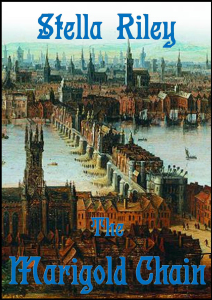
Available now from Amazon
and Createspace at https://www.createspace.com/5705682


September 18, 2015
The PLAYER
The Player
Rockliffe Book Three
is now available as a paperback
Purchase from Amazon
or from Createspace via https://www.createspace.com/5671680


September 13, 2015
The Mesalliance
The Mesalliance is now available as a paperback
Available for purchase from Amazon
or from Createspace via the following link https://www.createspace.com/5668737


September 6, 2015
The King’s Falcon on Countdown
September 2, 2015
New look for The Marigold Chain
The Marigold Chain has now had a make-over
The last of my novels to get the ‘treatment’.
Thank goodness! Now I can concentrate on Eden.






